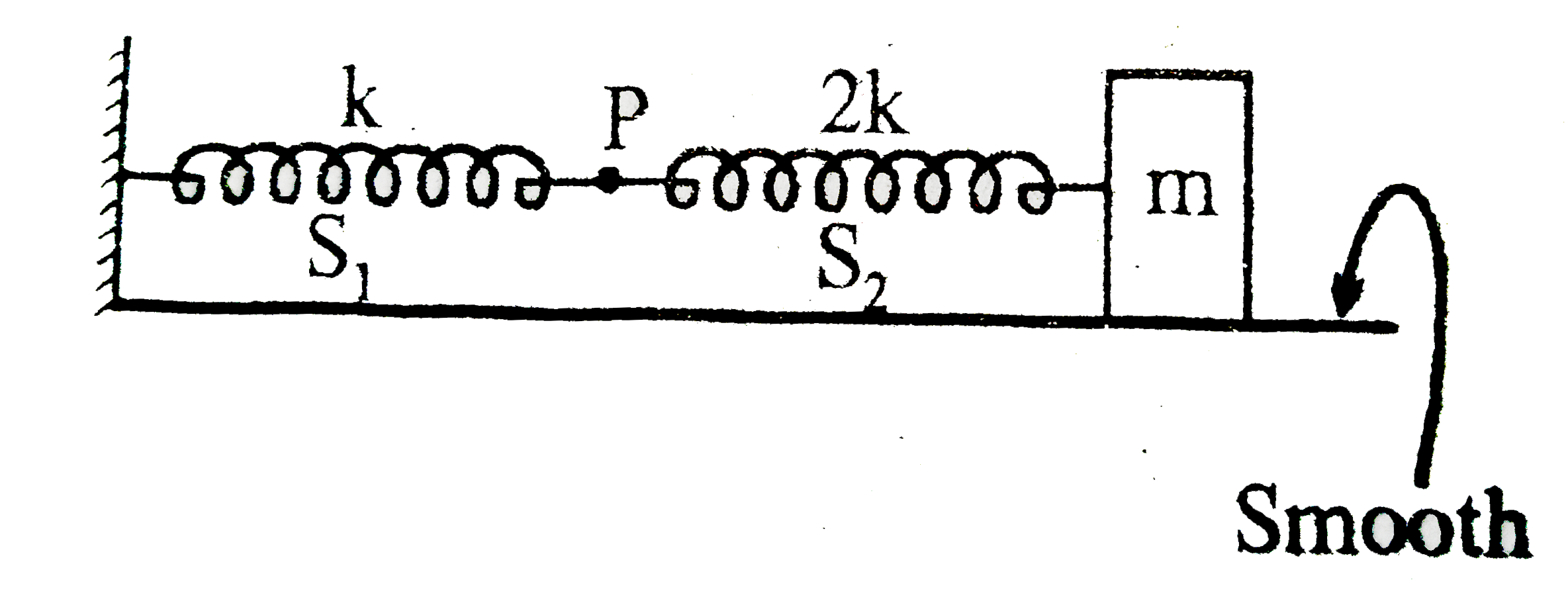The mass M shown in the figure oscillates in simple harmonic motion with amplitude A. The maximum speed of junction P is V0. Assume springs are massless. Select the correct option/s

Amplitude of potential energy is springs S1 and S2 is respectivley 19kA2 and kA2
Amplitude of potential energy is S1 and S2 is respectively 29kA2 and 19kA2
V0=A√8k27M
V0=A√8k81M
The correct Answer is:BC
2k3A=kSp
Sp1=23A
Sp2=A3
U1 max=12k×4A29=2kA29
U2 max=122k×A29=kA29
V0=2A3×√2k3m
Topper's Solved these Questions
- BOOK - BANSALCHAPTER - TEST PAPERSEXERCISE - PHYSICS PART (A)32videos
TEST PAPERS
- BOOK - BANSALCHAPTER - TEST PAPERSEXERCISE - PHYSICS PART (B)3videos
TEST PAPERS
- BOOK - BANSALCHAPTER - TEST PAPERSEXERCISE - PHYSICS PART- C4videos
TEST PAPERS
- BOOK - BANSALCHAPTER - SEMICONDUCTORSEXERCISE - CBSE Question32videos
SEMICONDUCTORS
Similar Questions
Knowledge Check
- Question 1 - Select One
The mass M shown in figure ocillates in simple harmonic motion with amplitude A.
The amplitude of the point P is
 Ak1Ak2Bk2Ak2−k1Ck2Ak1+k2Dk2Ak1
Ak1Ak2Bk2Ak2−k1Ck2Ak1+k2Dk2Ak1 - Question 2 - Select One
The mass M shown in the figure oscillates in simple harmnonic motion and amplitude A. The amplitude of the point P is
 Ak1Ak2Bk2Ak1Ck1Ak1+k2Dk2Ak1+k2
Ak1Ak2Bk2Ak1Ck1Ak1+k2Dk2Ak1+k2 - Question 3 - Select One
For a particle executing simple harmonic motion, the amplitude is A and time period is T. The maximum speed will be
A4ATB2ATC2π√ATD2πAT
The maximum velocity a particle, executing simple harmonic motion with an amplitude 7 mm, 4.4 m//s. The period of oscillation is.
View SolutionA particle executing simple harmonic motion of amplitude 5 cm has maximum speed of 31.4 cm / s . The frequency of its oscillation is
View SolutionA particle executing simple harmonic motion of amplitude 5cm has maximum speed of 3.14cm/s. The frequency of its oscillation is
View SolutionA particle executes simple harmonic motion with a of period of 6 s and amplitude of 3 cm. Its maximum speed (in cm/s) i
View SolutionA particle executing simple harmonic motion of amplirtude 5cm has maximum speed of 31.4cm/s The frequency of its oscillation is
View Solution

